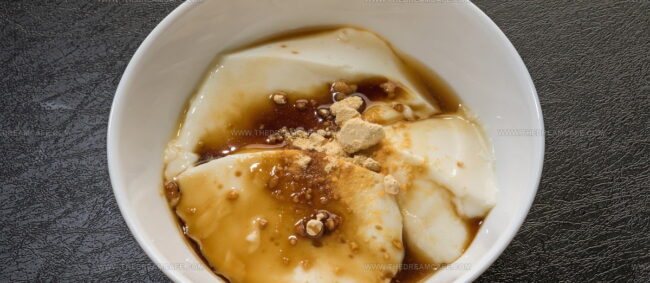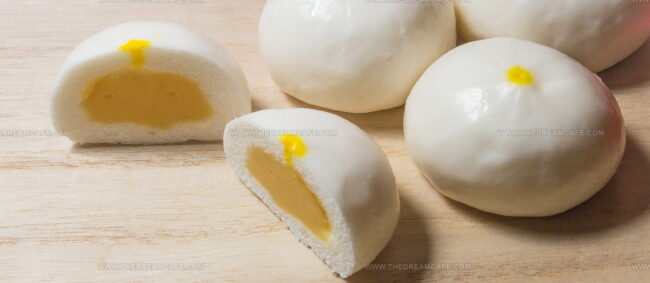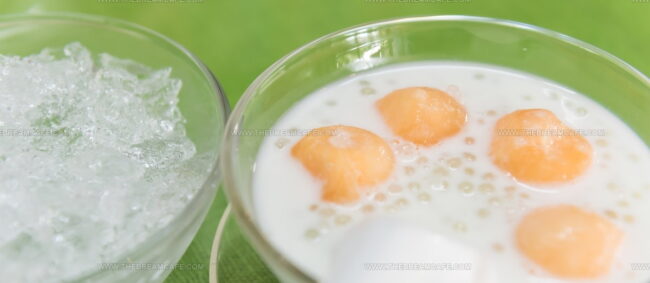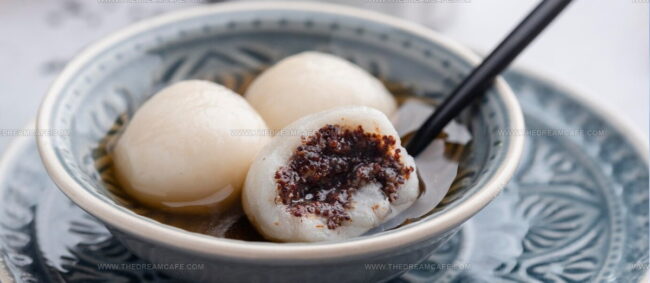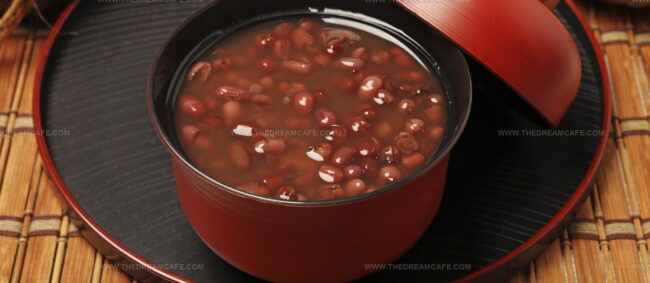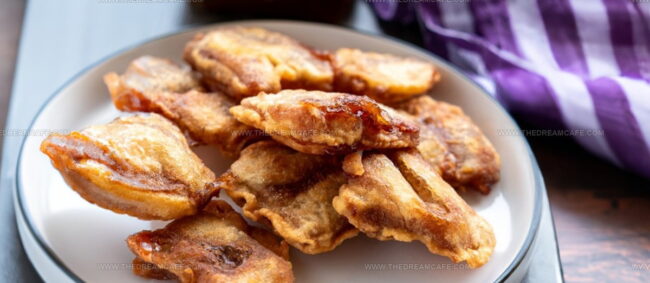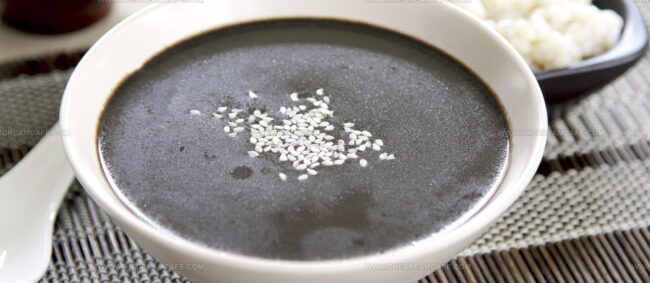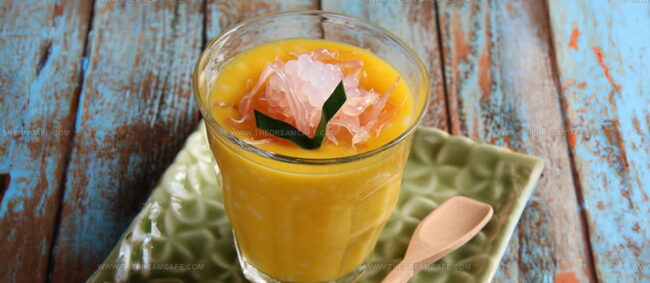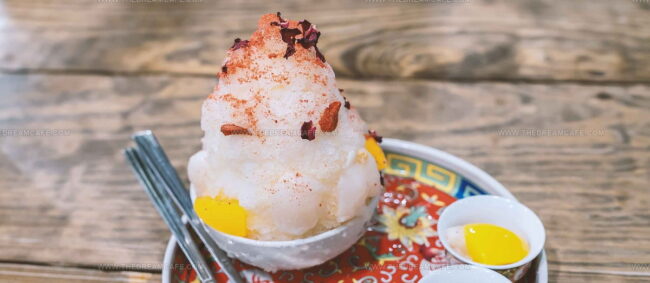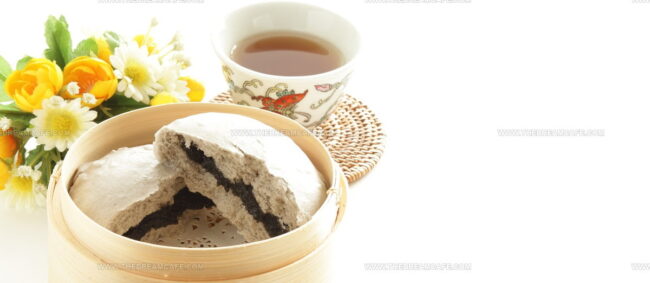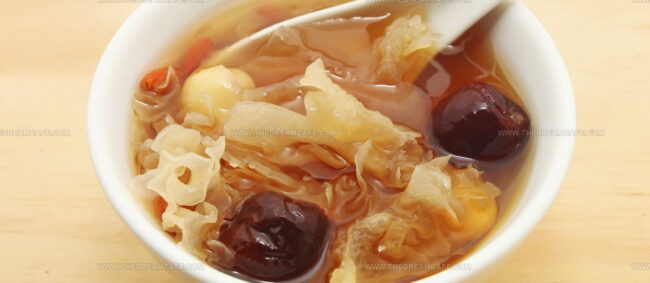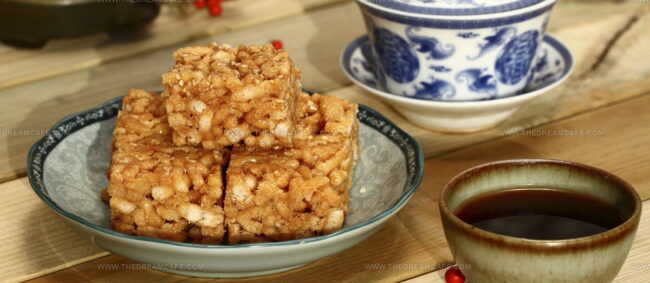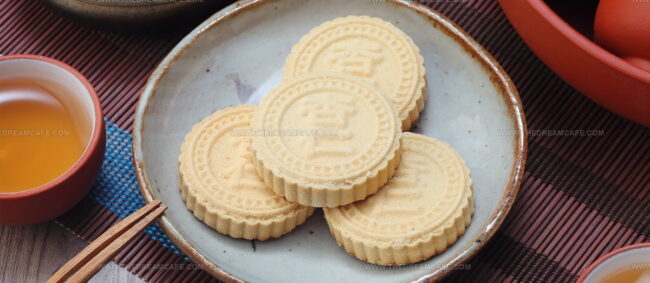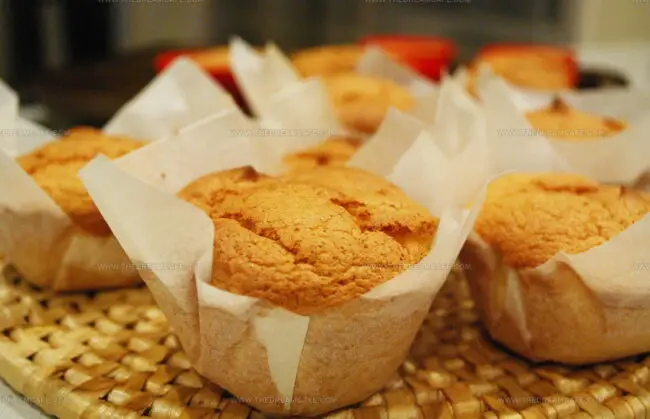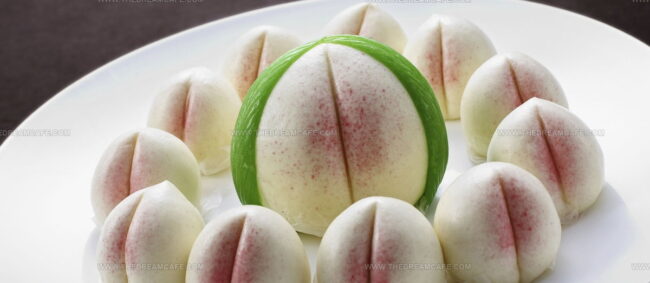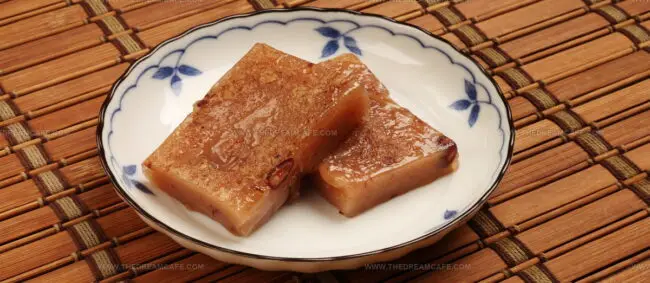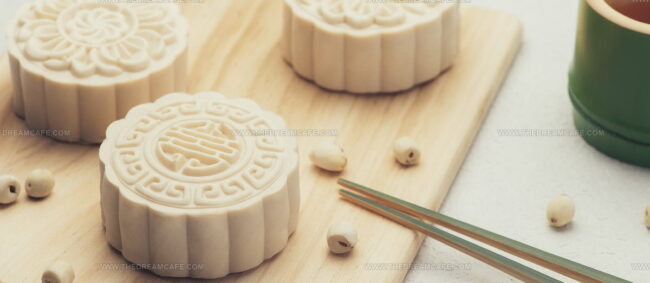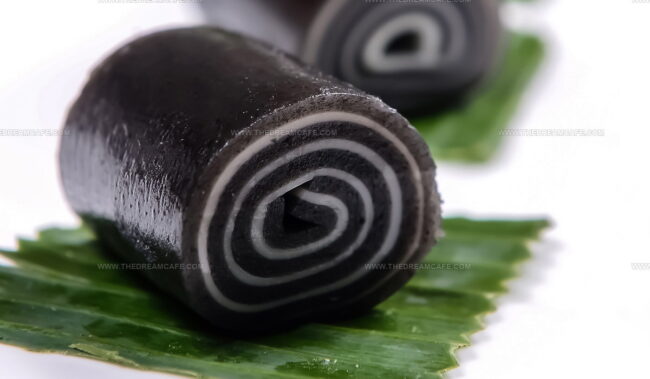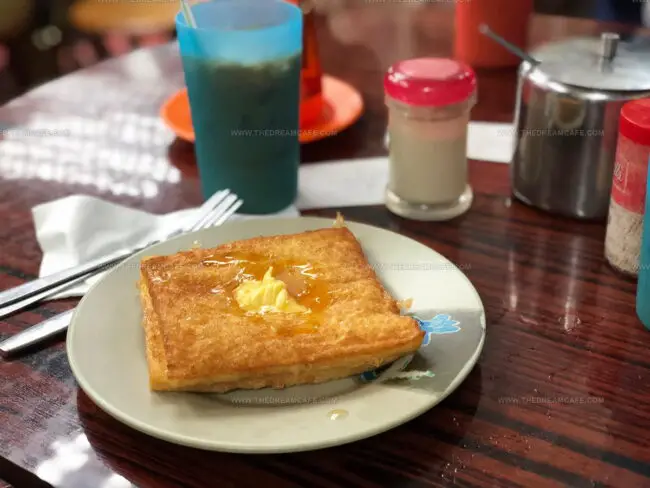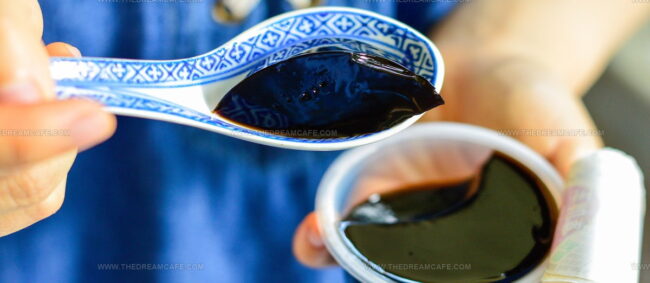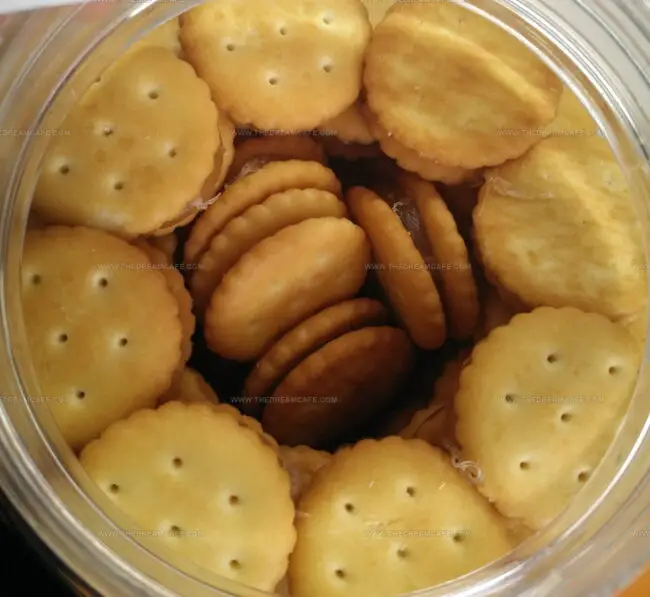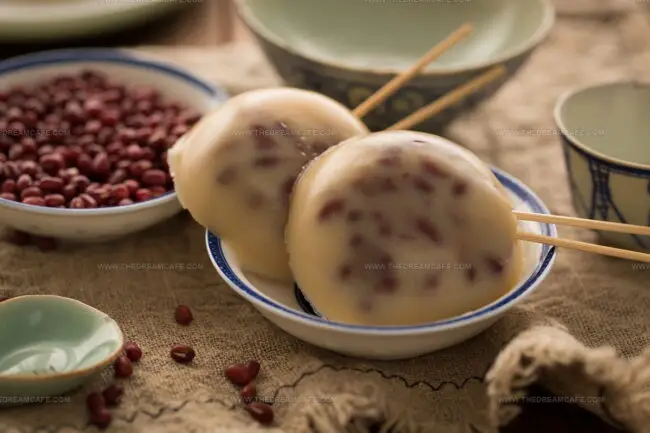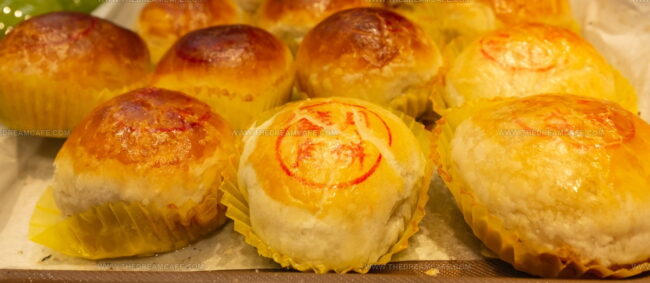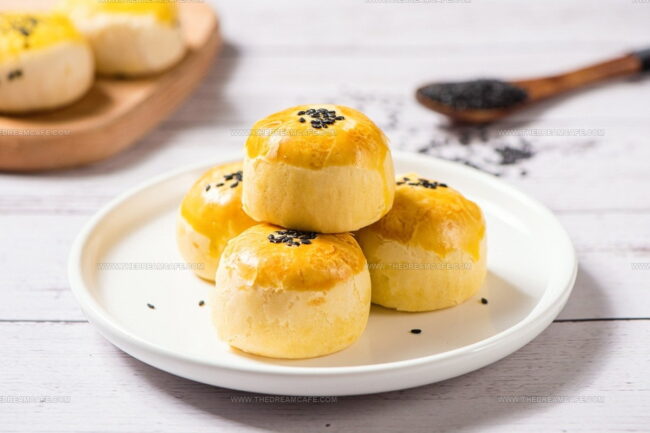33 Classic Chinese Desserts You Need to Try
Sweet Chinese desserts have captivated taste buds across generations with their unique textures and delicate flavors.
Traditional culinary artisans craft these delectable treats using centuries-old techniques passed down through families.
Ingredients like rice, beans, and fruits play crucial roles in transforming simple components into extraordinary delicacies.
Subtle balance between sweetness and complexity defines the essence of Chinese dessert-making.
Intricate preparation methods showcase the cultural significance behind each carefully constructed confection.
Techniques range from steaming and boiling to precise sugar work that requires remarkable skill.
Regional variations highlight the diverse culinary landscape of different Chinese provinces.
You'll find these 33 classic Chinese desserts reveal fascinating stories of tradition and innovation:
Which Classic Chinese Desserts Are Most Irresistible?
Chinese desserts range from delicate almond tofu to sticky sesame balls. Sweet, refreshing, or chewy, these treats offer a unique take on dessert time.
Egg Waffle
Egg waffles are crispy-edged street snacks from Hong Kong featuring a signature bubble-shaped design with interconnected spherical pockets that pull apart easily.
Originating in local markets, these sweet treats combine simple ingredients like eggs, milk, flour, and sugar into a unique textural experience.
Street vendors cook egg waffles in specialized metal pans with circular molds that create their distinctive round shape.
Hong Kong residents enjoy these snacks plain or topped with fruits, chocolate, or ice cream.
Vendors carefully pour batter into hot griddles, watching for perfect golden-brown coloration.
Each waffle emerges with a satisfying crunch and soft interior.
Street food culture in Hong Kong elevates these simple yet irresistible egg waffles into a beloved culinary tradition.
Serradura
Serradura is a creamy Portuguese-Macanese layered dessert featuring crushed tea cookies alternating with rich whipped cream and condensed milk.
Originally crafted in Portugal, this sweet treat gained massive popularity in Macau's culinary scene.
Simple ingredients transform into an elegant dessert with minimal preparation time.
Classic vanilla flavor remains traditional, though modern variations experiment with different taste profiles.
Restaurants and bakeries throughout Macau frequently serve this dessert.
Texture contrasts between smooth cream and crunchy cookie crumbs make each spoonful interesting.
Condensed milk adds a luxurious sweetness to the delicate layers.
Visual appeal comes from the distinctive sawdust-like appearance of crushed cookies between white cream layers.
Egg Tart
Egg tarts are signature sweet pastries from Hong Kong featuring a buttery, crisp shortcrust shell filled with silky smooth egg custard that melts in your mouth.
Portuguese and British culinary influences shaped this delicate dessert during colonial trade periods in China.
Macau especially popularized the tart's unique style with its distinctive caramelized surface and rich egg filling.
Street vendors and bakeries across Hong Kong and Southern China sell these treats as quick snacks or dessert options.
Flaky pastry surrounds a golden custard made from eggs, milk, and sugar blended into a creamy center.
Traditional recipes pass through generations, preserving the tart's classic preparation methods.
Bakers carefully balance ingredients to create the perfect balance of crisp exterior and smooth interior.
Chinese Mango Pudding (Mangguo Buding)
Chinese mango pudding ranks as a beloved dim sum dessert featuring smooth, silky mango-infused gelatin that melts in you mouth.
Sweet, ripe mangoes blend seamlessly with milk and gelatin to create a light, refreshing treat perfect for summer evenings.
Hong Kong restaurants frequently serve this chilled dessert as a popular sweet course after savory dim sum meals.
Simple ingredients like fresh mangoes, sugar, milk, and gelatin transform into a creamy, smooth pudding with minimal preparation effort.
Professional kitchens carefully puree mangoes before mixing with hot water and gelatin to ensure a consistent texture.
Cold temperatures help set the pudding, creating a luxurious dessert that looks elegant in shallow serving dishes.
Optional garnishes like fresh mint leaves or additional mango pieces enhance visual appeal.
Traditional Chinese culinary techniques make this dessert a favorite among sweet treat enthusiasts.
Tofu Pudding (Douhua)
Tofu pudding (Douhua) is a silky smooth Asian dessert crafted from delicate soy milk curds that melt effortlessly on your tongue.
Street vendors and dim sum restaurants across Asia proudly serve this versatile treat with sweet or savory toppings that range from ginger syrup to salty seasonings.
Chinese culinary traditions first developed this soft, creamy delicacy that quickly spread throughout neighboring countries.
Soy milk gets carefully coagulated to create its signature ultra-tender texture, making each spoonful a luxurious experience.
Dim sum restaurants frequently include this dish as a popular dessert option.
Skilled cooks transform simple soy milk into an incredibly light and smooth pudding.
Multiple toppings allow diners to customize their experience with different flavor profiles.
Steamed Custard Buns (Nai Wong Bao)
Nai wong bao are classic Chinese steamed buns packed with silky egg custard that bursts with golden-yellow richness and sweet buttery flavors.
Wheat flour dough creates a soft, pillowy exterior that wraps around the creamy filling with delicate precision.
Dim sum restaurants frequently serve these round treats alongside fragrant Chinese tea.
Skilled bakers carefully steam the buns to achieve a light, fluffy texture.
Traditional recipes follow precise techniques passed through generations.
Subtle differences emerge between northern and southern Chinese preparation methods.
Bakeries and street vendors across China continue to craft these beloved pastries with time-honored techniques.
Sago In Coconut Milk (Sao Mai Lo)
Sago in coconut milk (Sao mai lo) is a classic Cantonese dessert soup featuring translucent tapioca pearls swimming in rich, creamy coconut milk.
Hong Kong and Guangzhou restaurants commonly serve this sweet treat as a refreshing end to dim sum meals.
Cool summer variations include mixing fresh tropical fruits like mango, pomelo, and strawberries into the pearly dessert.
Traditional preparation involves slowly cooking small white sago pearls until they become transparent and soft.
Coconut milk provides a smooth, sweet base that complements the chewy pearl texture.
Street vendors and home cooks often customize the dessert with additional ingredients like ginger syrup or palm sugar.
Cantonese diners consider this dessert a nostalgic comfort food that connects generations through its simple yet satisfying ingredients.
Tang Yuan
Tang yuan are sweet, glutinous rice flour dumplings symbolizing family unity through their round shape and traditional significance during Chinese New Year celebrations.
Rice flour balls range from small plain versions to larger ones filled with sweet ingredients like black sesame, peanut, or red bean paste.
Warm broth typically accompanies these chewy treats, which may include ginger or osmanthus flower flavoring.
Soft and sticky textures define these delicate desserts.
Chinese families serve tang yuan as a meaningful holiday dessert.
Lantern Festival marks the primary occasion for enjoying these symbolic treats.
Sweet syrup complements the tender rice balls.
Fillings provide additional flavor complexity to the simple yet elegant dessert.
Red Bean Soup (Hong Dou Tang)
Red bean soup is a revered Chinese dessert featuring azuki beans simmered into a subtly sweet broth with complex nutritional benefits.
Traditional preparation includes lotus seeds and citrus peels that enhance its delicate flavor profile.
Chinese families enjoy this soup year-round, serving it hot during winter and chilled in summer months.
Nutritionists praise the soup for its impressive health advantages, including boosting immunity and supporting digestive wellness.
Additional ingredients like dates, sago, longan, and coconut milk can customize the soup's texture and taste.
Red beans form the soup's foundation, providing rich color and earthy undertones.
Chinese New Year’S Cake (Nian Gao)
Nian gao represents a symbolic Chinese New Year dessert with deep cultural significance and sweet, sticky textures crafted from glutinous rice flour and brown sugar.
Rice cake legends suggest consuming this treat ensures prosperity and good fortune in the coming year.
Traditional recipes feature a dark caramel-like appearance and chewy consistency that melts in your mouth.
Families prepare nian gao using generations-old techniques passed through centuries of celebration.
Preparing this special dessert requires careful attention to ingredients and cooking methods.
Sweet memories and cultural connections emerge with each bite of this meaningful New Year delicacy.
Generations continue honoring this cherished culinary tradition during festive gatherings.
Black Sesame Soup (Zhi Ma Hu)
Black sesame soup combines silky smoothness with powerful nutrition, serving as a traditional Chinese dessert packed with health-boosting properties.
Southern China and Hong Kong cherish this sweet soup as a beloved breakfast or teatime treat accompanying dim sum.
Nutrient-dense black sesame seeds transform this dessert into a wellness elixir rich in vitamin B, magnesium, calcium, manganese, and iron.
Smooth and velvety in texture, zhi ma hu offers a gentle sweetness that comforts and nourishes.
Dim sum restaurants frequently feature this centuries-old recipe on their menus.
Warm or chilled, this soup provides a quick, satisfying meal that connects modern diners with ancient Chinese culinary traditions.
Doushabao
Doushabao are traditional Chinese steamed buns bursting with smooth, sweet red bean paste that originated in China's rich culinary landscape.
Sweet and pillowy soft, these delicate baozi showcase the subtle artistry of Chinese bread making.
Red bean paste creates a rich, smooth filling that melts inside the tender white dough.
Wheat flour and yeast form the bun's delicate exterior, which becomes light and airy when steamed.
Doushabao represent a beloved street food and home-style comfort dish across many Asian regions.
Restaurants and street vendors frequently serve these buns as affordable, quick snacks.
Mango Pomelo Sago
Mango pomelo sago is a sweet tropical dessert combining fresh mango chunks, pearl-like sago pearls, and tangy pomelo segments in a creamy coconut milk base.
Singapore's Lei Gardens restaurant first created this refreshing treat in 1984, quickly popularizing it across Hong Kong, Singapore, and Taiwan.
Cold coconut milk provides a smooth foundation for the dessert's complex textures and flavors.
Sago pearls add a unique chewy element to each spoonful.
Ripe mango pieces bring natural sweetness and vibrant color to the dish.
Pomelo segments contribute a zesty citrus note that cuts through the creamy mixture.
Whole milk or evaporated milk enhances the dessert's rich consistency.
Summer temperatures make this chilled dessert especially appealing to those seeking a cool, fruity treat.
Baobing
Baobing are traditional shaved ice desserts from East Asia that transform simple ingredients into a refreshing summer treat.
Chinese and Taiwanese street vendors craft these cool delicacies by blending finely shaved ice with ripe tropical fruits like mangoes, litchis, and rambutans.
Sweet condensed milk drizzles over the ice, creating a creamy base that enhances the fruit's natural flavors.
Mung beans and peanuts add contrasting textures and nutty undertones to each bite.
Night markets across China, Taiwan, and Vietnam buzz with customers seeking this affordable and cooling dessert.
Summer temperatures make baobing an essential street food for locals and tourists alike.
Vendors expertly layer ingredients to create a satisfying balance of sweetness, crunch, and refreshment.
Nuomici
Nuomici are sweet glutinous rice flour pastry balls beloved across China and Hong Kong for their soft, chewy texture and coconut-coated exterior.
Originating in Guangdong province, these bite-sized treats feature a delicate rice flour dough wrapped around rich fillings like sweet azuki bean paste, ground peanuts, or black sesame seed paste.
Desiccated coconut provides a crisp, textural coating that contrasts beautifully with the smooth, tender inner filling.
Skilled bakers carefully craft each nuomici to ensure a perfect balance of flavors and textures.
Street vendors and bakeries throughout southern China sell these popular desserts as quick snacks or sweet treats.
Traditional preparation involves hand-rolling the dough and meticulously shaping each small ball.
Nuomici showcase the elegance of Chinese dessert-making through their simple yet refined ingredients.
Thousand-Layer Cake (Chien Chang Go)
Thousand-layer cake blends delicate egg-based layers into a sweet Chinese dim sum treat originating from traditional Cantonese cuisine.
Bakers meticulously stack thin sheets of dough using a precise combination of eggs, butter, sugar, flour, condensed milk, vanilla, and baking powder.
Each layer gets carefully folded and cooked to create a light, flaky texture with subtle sweetness.
Rich golden-brown edges highlight the cake's intricate construction and professional technique.
Sophisticated yet simple, this dessert requires significant skill and patience to execute perfectly.
Gentle folding and precise cooking temperatures determine the cake's final texture and appearance.
Diners enjoy thousand-layer cake as a delicate end to a dim sum meal or afternoon tea.
Black Sesame Bun (Zhi Ma Bao)
Black sesame buns originate from Northern China as a sweet, soft bakery item prized for its rich, nutty black sesame filling.
Traditional Northern Chinese bakers craft these steamed buns using leavened wheat flour dough stuffed with a smooth paste of ground toasted black sesame seeds, sugar, and cornstarch.
Sesame seeds often garnish the white exterior, creating visual contrast against the dark interior filling.
Vendors commonly sell these buns as street food or dessert in markets and bakeries across China.
Family gatherings and festive occasions frequently feature these small, round buns as a popular sweet treat.
Modern variations sometimes incorporate additional ingredients like honey or different flour types to enhance the traditional recipe.
Snow Fungus Soup (Yin Er Tang)
Snow fungus soup is a traditional Chinese dessert prized for its health-boosting properties and delicate texture, featuring a unique edible fungus known for nourishing lung health.
Women especially benefit from this ancient remedy, which requires careful preparation involving lengthy soaking of the snow fungus.
Sweet and medicinal ingredients like red dates, lotus seeds, gingko nuts, and wolfberries enhance the soup's complex flavor profile.
Chinese families traditionally serve this dessert during festive celebrations, especially New Year.
Sugar provides additional sweetness to the light, gelatinous liquid.
Snow fungus grows naturally on trees and has been used in Chinese medicine for centuries.
Careful cooking ensures optimal taste and medicinal benefits.
Sachima
Sachima are traditional Chinese pastry clusters featuring deep-fried dough strips bonded with sweet syrup into compact, bite-sized treats popular during Chinese New Year celebrations.
Originating in northeastern China, these crispy snacks emerged as a racetrack favorite during the 1960s and 1970s.
Street vendors and convenience stores commonly sell sachima with various toppings like sesame seeds, desiccated coconut, watermelon seeds, and dried fruits.
Chinese families often prepare sachima as a festive dessert during holiday gatherings.
Sugar syrup serves as the binding agent that transforms individual fried dough strips into cohesive, golden-brown clusters.
Sachima provide a satisfying sweet crunch with balanced textures and minimal ingredients.
Kids and adults alike enjoy these nostalgic treats as quick energy-boosting snacks.
Macau Almond Cookies (Aomen Xing Ren Bing)
Macau almond cookies are delicate, crumbly pastries infused with rich almond flavor and decorated with intricate wooden mold patterns.
Portuguese colonial influences shaped these powdery treats, which emerge from traditional bakeries across Macau's historic districts.
Street vendors roast almonds to create the signature nutty fragrance that attracts tourists and locals alike.
Tourists frequently purchase these cookies as memorable souvenirs from their Macau travels.
Handcrafted wooden molds press distinctive designs onto each cookie's surface, reflecting generations of baking expertise.
Almond flour and sugar form the primary ingredients, creating a melt-in-your-mouth texture.
Compact and lightweight, these cookies symbolize Macau's unique culinary heritage.
Paper Wrapped Cake (Zi Baau Daan Gou)
Paper wrapped cake are delicate Hong Kong bakery treats steamed and baked inside distinctive paper wrappers that create a unique texture and shape.
Originating in traditional Cantonese cuisine, these soft sponge cakes blend simple ingredients like butter, eggs, milk, flour, sugar, and vanilla extract.
Home bakers and street vendors carefully craft these lightweight pastries with precise mixing techniques.
Special folded paper encases each cake during cooking, producing a signature golden-brown exterior.
Moisture stays trapped inside, ensuring a tender crumb and delicate flavor profile.
Street markets and small bakeries across Hong Kong sell these popular snacks as quick breakfast or afternoon treats.
Families often enjoy these cakes with tea or as light desserts.
Tong Sui
Tong sui are traditional Cantonese sweet soups or custard-like desserts crafted from water or coconut milk, offering a wildly diverse range of flavors and textures.
Street vendors and specialty shops across China serve these sugary treats in countless variations, from simple fruit-based recipes to exotic combinations like guilinggao (tortoise shell jelly) and hasma (frogs' fallopian tube soup).
Mango, pomelo, strawberries, and citrus peels frequently flavor these desserts, while toppings like ice cream, herbal grass jelly, and glutinous rice dough balls called tong yuan add complexity.
Tapioca pearls, vanilla bean, peanut and black sesame pastes, and almond or walnut flour create additional depth in these sweet concoctions.
Seasonal adaptations allow enjoyment of tong sui hot or cold, making them a flexible and beloved dessert.
Longevity Peach Buns (Shoutao Bao)
Longevity peach buns symbolize immortality and good fortune in Chinese culture, transforming a simple pastry into a sacred culinary symbol deeply rooted in ancient mythology.
White flour buns shaped like peaches feature a distinctive reddish tip that mimics the sacred fruit's elegant silhouette.
Chinese traditions connect these buns to celestial legends about magical peaches that grant eternal life when consumed.
Birthday celebrations and special banquets prominently feature these meaningful pastries as auspicious gifts.
Skilled bakers craft the buns with precision, filling them with smooth red bean paste, creamy custard, or sweet lotus paste.
Bakeries and food stalls across China showcase these symbolic treats in beautiful displays.
Small details like the precise peach shape and vibrant colors make these buns more than just a snack.
Chinese communities view longevity peach buns as edible blessings that carry wishes for long life and prosperity.
Red Bean Cake (Hong Dou Gao)
Red bean cake stands as a beloved Chinese dessert blending soft glutinous rice flour with sweet red bean paste.
Sweet rice flour and eggs form the cake's foundational base, creating a smooth and delicate texture.
Chinese families traditionally prepare this treat during festive celebrations and special gatherings.
Red beans get evenly distributed throughout the cake or serve as a rich inner filling.
Glutinous batter coats the beans, ensuring a moist and tender consistency.
Street vendors and home kitchens across China frequently make this sweet snack.
Variations include different bean paste smoothness and cake densities.
Regional preferences influence the cake's specific preparation methods.
Snow Skin Mooncake (Bing Pi Yuebing)
Snow skin mooncakes are delicate, chilled Chinese pastries originating from Hong Kong, featuring a soft, translucent rice flour wrapper that resembles pristine snow.
Traditional versions wrap sweet fillings like lotus seed paste or red bean paste inside a thin, cold membrane made from glutinous rice flour and milk.
Hong Kong bakeries popularized this modern twist on classic mooncakes, which are traditionally enjoyed during mid-autumn festival celebrations.
Seasonal variations include colorful wrappers infused with fruit juices or creative flavors like green tea and chocolate.
Skilled bakers carefully craft each mooncake by hand, ensuring a smooth, thin exterior that contrasts with rich inner ingredients.
Refrigeration is crucial to maintain the unique texture and prevent the delicate skin from melting.
Unlike baked mooncakes, these treats offer a cool, refreshing alternative to standard festival desserts.
Cold storage and precise preparation techniques make snow skin mooncakes a sophisticated, innovative Chinese confection.
Black Sesame Roll (Zhi Ma Juan)
Black sesame rolls are silky Chinese desserts bursting with nutty flavor from ground black sesame seeds.
Originating in Hong Kong, these delicate dim sum treats feature a smooth paste spread thinly and carefully rolled into compact cylinders.
Refrigeration helps the rolls maintain their delicate structure and enhances their creamy texture.
Bakers create these desserts by grinding toasted black sesame seeds into a fine paste, spreading it evenly, and rolling it into tight cylindrical shapes.
Sweet and slightly earthy, black sesame rolls offer a distinctive taste profile that sets them apart from other Asian desserts.
Traditional preparation methods ensure each roll maintains a consistent thickness and elegant appearance.
Restaurants and street vendors across Hong Kong serve these elegant sweets as popular after-meal treats.
Rich in nutrients and offering a unique flavor experience, black sesame rolls represent a classic example of Chinese culinary artistry.
Hong Kong-Style French Toast (Xi Duo Shi)
Hong Kong-style French toast is a decadent street food sensation that transforms simple milk bread into a crispy, sweet breakfast marvel.
Two slices of bread get slathered with peanut butter or coconut jam before being dipped in an egg and vanilla batter.
Chefs deep-fry the bread until its exterior turns a rich golden brown with crunchy edges.
Hot from the pan, the toast receives a pat of melting butter in its center.
Diners can choose from multiple sweet toppings like maple syrup, condensed milk, honey, or a scoop of creamy ice cream.
This fusion dish blends Western and Asian culinary traditions into one irresistible bite.
Street vendors and home cooks across Hong Kong have perfected this indulgent breakfast treat over generations.
Each mouthful offers a perfect balance of crisp texture and sweet, rich flavors.
Guilinggao
Guilinggao is a cooling Chinese herbal jelly dessert originating from traditional medicinal practices in Guangxi province, made from turtle shell powder and botanical ingredients.
Golden coin turtle shells were historically ground into a medicinal paste believed to heal various ailments and reduce internal heat.
Modern versions replace turtle shell powder with herbal extracts and gelatin, creating a sweet, dark brown dessert with a smooth, slippery texture.
Street vendors and dessert shops across Southern China serve guilinggao chilled as a refreshing summer treat.
Restaurants often garnish the jelly with brown sugar syrup or honey for added sweetness.
Health-conscious consumers still appreciate its traditional medicinal roots and cooling properties.
Younger generations enjoy guilinggao as a nostalgic and trendy dessert with historical significance.
Maltose Crackers (Maiya Tang Jia Bing)
Maltose crackers are crispy Hong Kong street snacks featuring sweet maltose syrup glazed over simple saltine crackers.
Street vendors popularized these treats during the 1950s and 1960s across busy urban markets.
Pedestrians would watch vendors drizzle golden maltose over crackers, creating an instant sweet-salty sensation.
Kids especially loved these affordable, quick treats that combined sugary syrup with crunchy crackers.
Traditional preparation involved carefully spreading warm maltose onto plain crackers for a smooth, glossy finish.
Vendors typically used wooden sticks to spread the syrup evenly and quickly.
Modern bakeries and specialty shops still produce these classic snacks, keeping the tradition alive.
Cantonese Mooncake (Danhuang Lianrong Yuebing)
Cantonese mooncakes are exquisite round pastries symbolizing family unity during the Mid-Autumn Festival, featuring a delicate golden-brown crust that encases rich lotus seed paste and often includes a salty preserved egg yolk at its center.
Traditional bakers craft these intricate treats with meticulous attention to decorative patterns and Chinese characters stamped on the surface, reflecting cultural significance.
Small yet meaningful, these mooncakes represent lunar celebrations and generations of culinary tradition.
Lotus seed paste provides a smooth, sweet interior that perfectly balances the slightly salty egg yolk.
Bakeries across China compete to create the most beautiful and flavorful versions.
Families and friends exchange these symbolic pastries as gestures of love and respect during festive gatherings.
Red Bean Steamed Rice Cake (Put Chai Ko)
Put chai ko are traditional Hong Kong steamed rice cakes with a unique soft, chewy texture and sweet red bean filling.
Small street vendors often sell these compact desserts in plastic bags or aluminum cups, continuing a generations-old culinary tradition.
Red beans are carefully cooked and blended with rice flour, wheat starch, and brown sugar to create a smooth batter.
Steaming transforms the mixture into a delicate cake with a rich, caramel-like flavor.
Street food culture embraces these snacks as quick, affordable treats enjoyed by locals and tourists alike.
Historically, vendors prepared put chai ko in earthenware bowls, though modern methods have shifted to more convenient containers.
Ingredients like rice flour and red beans provide a distinctive sweetness and dense consistency.
Compact size and portability make these rice cakes perfect for on-the-go snacking in Hong Kong's bustling streets.
Shanghai Mooncake (Shanghai Yuebing)
Shanghai mooncakes are luxurious pastries distinguished by their flaky, buttery shortbread-like crust brushed with a golden egg wash, originating from Shanghai's unique baking traditions.
Chinese bakers craft these delicate treats with a tender, rich texture that melts in your mouth.
Traditional fillings include sweet red bean or lotus seed paste, sometimes incorporating savory elements like salted egg yolks.
Shanghai-style mooncakes differ significantly from Cantonese versions, featuring a more delicate and lighter pastry.
Bakeries carefully prepare these seasonal delicacies during mid-autumn festival celebrations.
Regional ingredients and precise baking techniques contribute to their distinctive flavor profile.
Family gatherings often feature these elegant pastries as a cherished seasonal treat.
Airplane Olives (Gan Cao Lan)
Gan cao lan are tangy salted olives coated with licorice and herbs from Hong Kong's unique street vendor culture.
Vendors would toss these unique snacks to residents living in upper-floor apartments in exchange for money thrown back down.
Street sellers created this innovative trading method to sell their signature preserved olives without climbing stairs.
Licorice adds a distinctive sweet-salty flavor to the preserved olives.
Herbs enhance the complex taste profile of these traditional treats.
Marinating in salt intensifies the olive's natural flavor.
Hong Kong residents developed this creative snacking tradition during bustling urban market times.
How Are Chinese Desserts Typically Prepared and Served?
Chinese desserts are known for their delicate balance of textures and flavors, often focusing on subtle sweetness, natural ingredients, and harmony rather than heavy sugar or rich creams. Preparation and serving styles vary widely across regions but share some common characteristics
Chinese desserts emphasize balance and natural flavors, often doubling as healthful treats or digestive aids.





